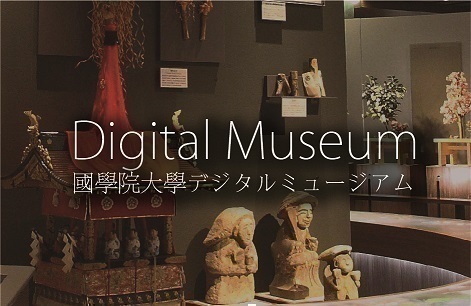- トップ
- Encyclopedia of Shinto
- Saiin
Encyclopedia of Shinto
| Main Menu: | |
| Links: |
詳細表示 (Complete Article)
| カテゴリー1: | 3. Institutions and Administrative Practices |
|---|---|
| カテゴリー2: | Ancient |
| Title | Saiin |
| Text | The saiin was an unmarried royal princess who served at the Kamo Shrines in Kyoto. She was also called Kamo no saiō and itsuki no miya, both which denote a consecrated princess of Kamo. The term saiin originally referred to the residence of a Kamo princess, but it also came to mean the princess herself or her position. In principle, a saiin was chosen from among the naishinnō, or daughters and sisters of an emperor. But when there was not an appropriate candidate, a granddaughter (nyoō) of an emperor was appointed. However, a saiin did not have to be related to the reigning — she could be related to any emperor. In the ninth century, Princess Uchiko, a daughter of Emperor Saga (r. 809-823), was the first of thirty-five saiin. Princess Reishi, a daughter of Emperor Gotoba (r. 1183-1198), was the last saiin. She was appointed in the early thirteenth century, during the reign of Tsuchimikado (r. 1198-1210) or, in one theory, Juntoku (r. 1210-1221). There are several theories regarding the exact reason for establishing the office of saiin, but the most compelling of these have to do with political struggles in the early Heian period. In 810, Emperor Saga was challenged by the Kusuko Incident, an attempt by the retired sovereign Heizei to resume the throne and move the capital back to Nara. Emperor Saga petitioned at the Kamo Shrines for victory over the rebels. When he subdued the rebellion, he dedicated his daughter Uchiko to the shrines in order to express his thanks to the deities. In this context, the institutionalization of the saiin may show that Saga intended that the gods of Kamo become the "protective deities" (chinjushin) of the relatively new Heian capital. Scholars theorize that the saiin was established in either 810 or 818. Even if one assumes that the institution existed informally before 818, the establishment of the Saiinshi, the office that administered the saiin, in that year suggests that it was from this time that the official establishment of the saiin took place. As a rule, a saiin was selected by divination at the beginning of an emperor's reign. After a two-year period of purification (kessai), in the fourth month of the third year of her appointment she entered her official residence, the Saiin (Murasakinoin). Here, the princess conducted various rites while strictly avoiding impurity and Buddhist rituals. For instance, she used "euphemistic language" (imi kotoba) to avoid taboo words. There were, however, some saiin like Princess Senshi (964-1035), for example, who held a deep interest in Buddhism and did not avoid Buddhist rites during her long term (975-1031). A saiin only entered the Kamo Shrines to join in the ceremonies during a festival. However, if the festival did not involve the royal court, or if it was an exceptional rite held at an emperor's personal request, the princess did not participate. Before the festival, the princess underwent a ritual cleansing (misogi) in the Kamo River. On this occasion, many officials and attendants accompanied her in a large procession. Similar to the actual day of the festival, this procession attracted numerous onlookers and has been recorded in a number of literary works. There was no definite term of office for a saiin. In general, she was dismissed when the sovereign abdicated, when there was a death in her family, if she became ill, or when she suffered an accident. However, there are also many examples of some saiin remaining in office even after the reigning emperor retired. While both are referred to as saiō, this is the greatest of several differences between the saiin and the saigū, the consecrated princess of Ise. These differences are due to the variations in the nature of sovereignty in the late seventh century, when the saigū system was established, and the early Heian period, when the saiin was created. It also probably relates to differences in the significance of Ise Jingū and Kamo Jinja to the imperial court. Although many possibilities come to mind, it is not clearly known why in the early thirteenth century the office of the saiin was discontinued. Some of the princesses who served as saiin were enthusiastic participants in literary activities such as poetry contests (uta awase), and they produced a number of literary works. At present, in the Aoi (Hollyhock) Festival conducted in Kyoto every May at the Kamo Shrines, a maiden posing as the ancient saiin forms the center of the procession, adding atmosphere to the festival. — Namiki Kazuko |




